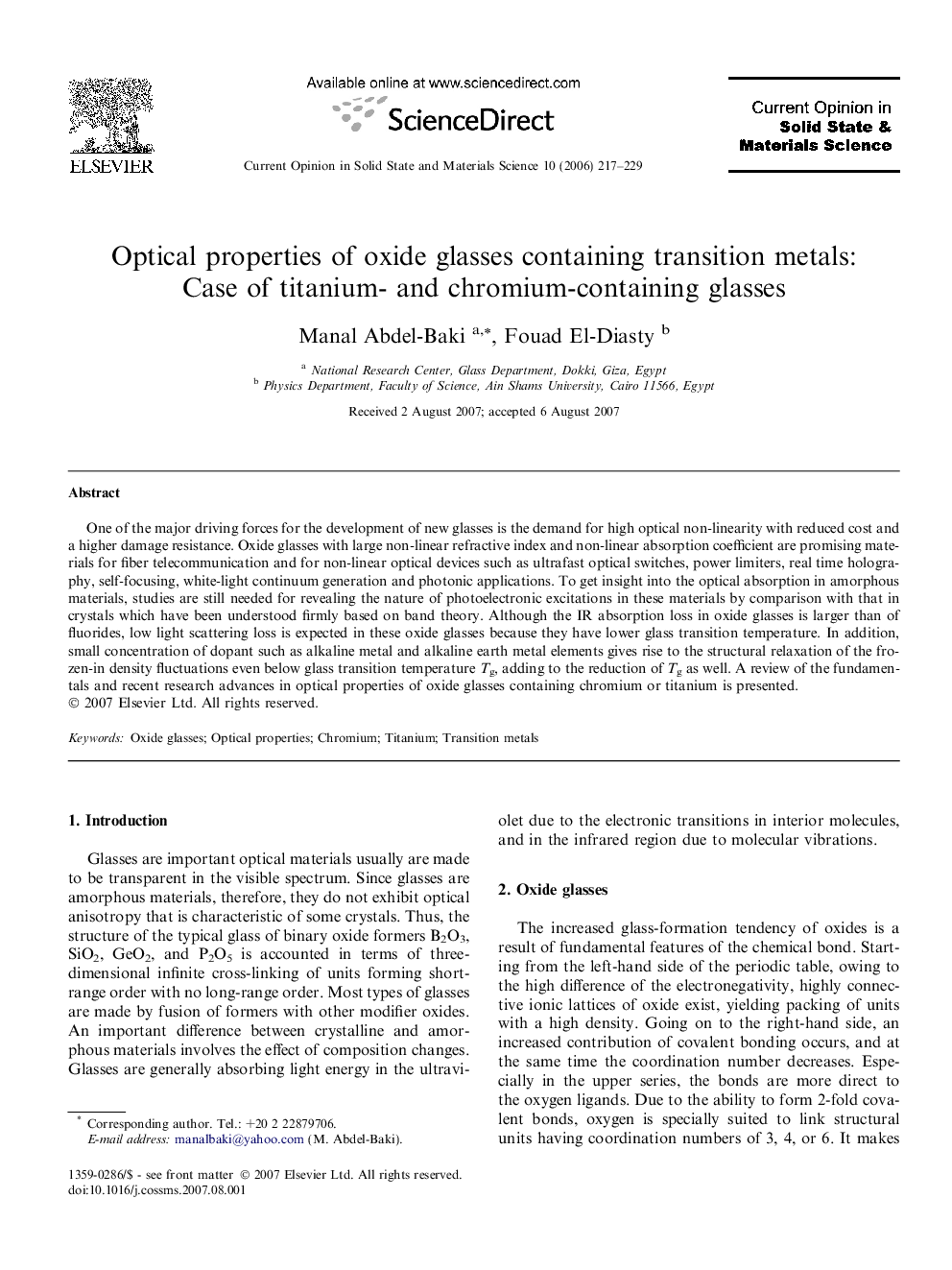| Article ID | Journal | Published Year | Pages | File Type |
|---|---|---|---|---|
| 1555596 | Current Opinion in Solid State and Materials Science | 2006 | 13 Pages |
One of the major driving forces for the development of new glasses is the demand for high optical non-linearity with reduced cost and a higher damage resistance. Oxide glasses with large non-linear refractive index and non-linear absorption coefficient are promising materials for fiber telecommunication and for non-linear optical devices such as ultrafast optical switches, power limiters, real time holography, self-focusing, white-light continuum generation and photonic applications. To get insight into the optical absorption in amorphous materials, studies are still needed for revealing the nature of photoelectronic excitations in these materials by comparison with that in crystals which have been understood firmly based on band theory. Although the IR absorption loss in oxide glasses is larger than of fluorides, low light scattering loss is expected in these oxide glasses because they have lower glass transition temperature. In addition, small concentration of dopant such as alkaline metal and alkaline earth metal elements gives rise to the structural relaxation of the frozen-in density fluctuations even below glass transition temperature Tg, adding to the reduction of Tg as well. A review of the fundamentals and recent research advances in optical properties of oxide glasses containing chromium or titanium is presented.
